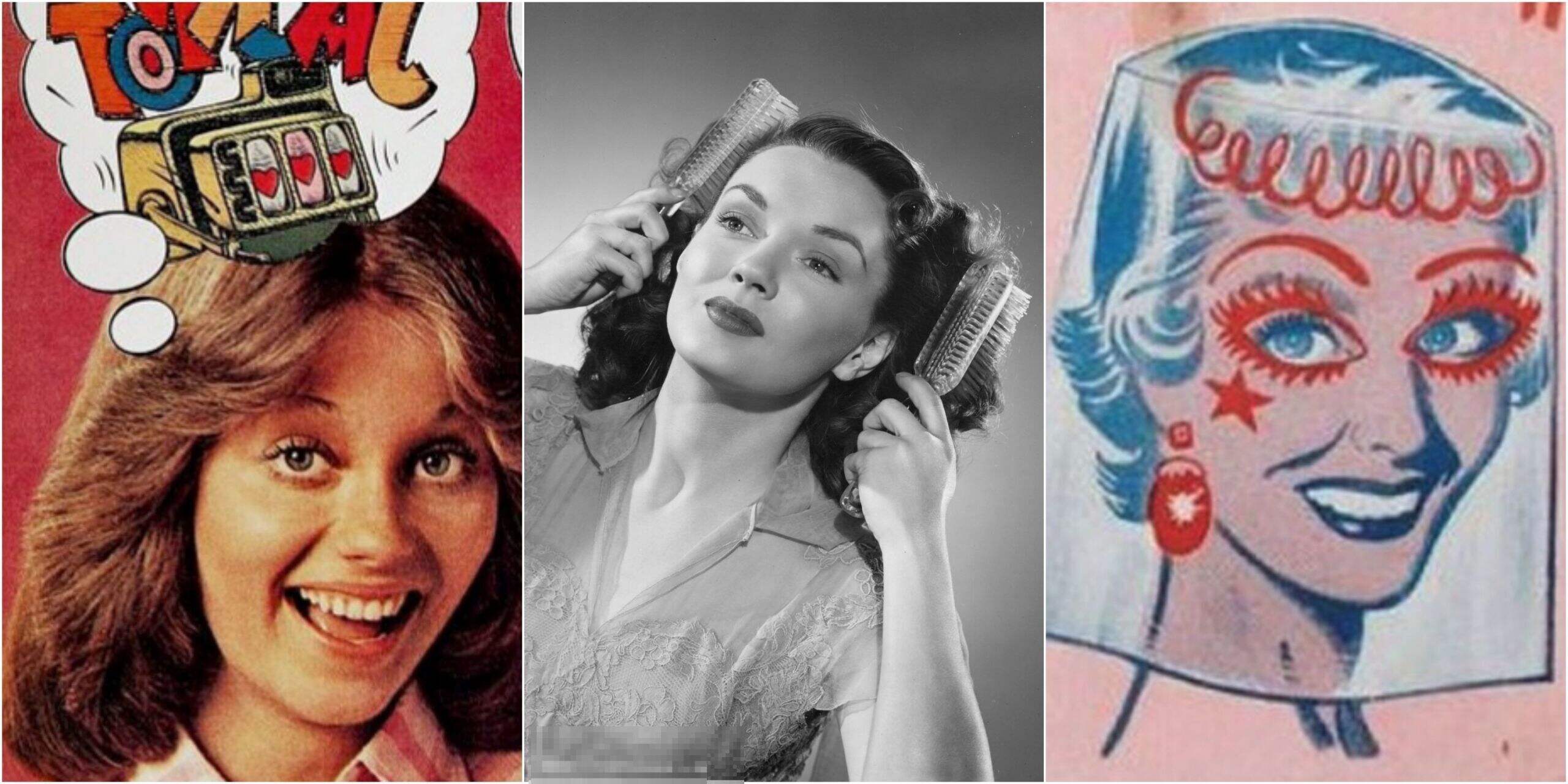
Ever seen an ad that made you scratch your head and wonder, "What were they thinking?" Weird ads are everywhere, from bizarre billboards to strange TV commercials. These quirky advertisements often leave us puzzled, amused, or even slightly disturbed. But why do companies create such odd marketing campaigns? Sometimes, it's about grabbing attention in a crowded market. Other times, it's a creative gamble that either pays off big or flops spectacularly. In this blog post, we'll dive into 35 of the most bizarre ads ever created and explore the stories behind them. Get ready for a wild ride through the world of advertising oddities!
Key Takeaways:
- Weird ads can be unforgettable, like a gorilla playing drums for Cadbury or a puppy-monkey-baby for Mountain Dew. Sometimes, strange is surprisingly effective in advertising.
- Animals, humor, shock value, and music are just some of the ways weird ads grab attention. From dancing eyebrows to talking stains, these ads prove that being odd can be oddly effective.
Weird Ads That Made History
Advertising can be a strange world. Sometimes, the weirdest ads are the ones that stick with us the longest. Here are some of the most bizarre ads that have ever graced our screens and billboards.
-
The Cadbury Gorilla: A gorilla playing the drums to Phil Collins' "In the Air Tonight" became an iconic ad for Cadbury chocolate. It was odd, but it worked.
-
Old Spice's "The Man Your Man Could Smell Like": This ad featured a man doing impossible things like riding a horse backward. It was strange but unforgettable.
-
Burger King's "Subservient Chicken": An interactive website where a man in a chicken suit would perform any action typed in by the user. It was bizarre but engaging.
-
Skittles' "Touch the Rainbow": Ads where everything a man touched turned into Skittles. It was weird and a bit creepy, but memorable.
-
Little Baby's Ice Cream: A person covered in ice cream eating themselves. It was unsettling but hard to forget.
Ads That Used Animals in Strange Ways
Animals often make ads more interesting. Sometimes, they are used in the most unexpected ways.
-
Energizer Bunny: A pink bunny that keeps going and going, drumming away. It was odd but effective.
-
Mountain Dew's "Puppy Monkey Baby": A creature with the head of a puppy, the body of a monkey, and the legs of a baby. It was strange but got people talking.
-
Cravendale's "Cats with Thumbs": Cats with opposable thumbs plotting to take over the world. It was bizarre but amusing.
-
Metro Trains' "Dumb Ways to Die": Animated characters dying in silly ways to promote train safety. It was dark humor but memorable.
-
John West Salmon's "Bear Fight": A man fighting a bear for a salmon. It was absurd but entertaining.
Ads That Played with Reality
Some ads blur the lines between reality and fantasy, leaving viewers scratching their heads.
-
Sony Bravia's "Bouncing Balls": Thousands of colorful balls bouncing down the streets of San Francisco. It was visually stunning but surreal.
-
Honda's "Cog": A Rube Goldberg machine made entirely of car parts. It was intricate and mesmerizing.
-
Terry Tate: Office Linebacker: A linebacker tackling office workers to enforce productivity. It was over-the-top but hilarious.
-
Evian's "Roller Babies": Babies roller-skating to hip-hop music. It was cute but strange.
-
Guinness' "Surfer": Surfers riding waves that turn into horses. It was poetic but odd.
Ads That Used Shock Value
Shock value can make an ad unforgettable, even if it's a bit unsettling.
-
Barnardo's "Break the Cycle": A girl repeatedly falling and getting back up, symbolizing the cycle of abuse. It was powerful but disturbing.
-
WWF's "Tsunami": A giant wave crashing into a city, symbolizing the impact of natural disasters. It was shocking but effective.
-
Benetton's "Unhate": World leaders kissing each other. It was controversial but thought-provoking.
-
Tide's "Talking Stain": A stain on a man's shirt that talks during a job interview. It was funny but weird.
-
Diesel's "Be Stupid": Encouraging people to take risks and be foolish. It was bold but strange.
Ads That Used Humor in Unexpected Ways
Humor can make an ad memorable, especially when it's unexpected.
-
Snickers' "You're Not You When You're Hungry": People turning into celebrities when they're hungry. It was funny and relatable.
-
Geico's "Hump Day": A camel walking through an office asking what day it is. It was silly but catchy.
-
Doritos' "Time Machine": A kid tricking a man into thinking he's traveled through time. It was clever and amusing.
-
Terry Crews for Old Spice: Terry Crews yelling and flexing his muscles to promote deodorant. It was loud but hilarious.
-
Dollar Shave Club's "Our Blades Are F*ing Great"**: A CEO walking through a warehouse explaining why their blades are great. It was blunt but funny.
Ads That Used Music in Strange Ways
Music can make an ad more engaging, especially when used in unexpected ways.
-
Heineken's "The Entrance": A man making a grand entrance at a party to a catchy tune. It was stylish but odd.
-
Volkswagen's "The Force": A kid dressed as Darth Vader trying to use the Force. It was cute but strange.
-
Cadbury's "Dancing Eyebrows": Kids dancing with their eyebrows to a funky beat. It was weird but catchy.
-
Sony Walkman's "Dancing Man": A man dancing through the streets to his Walkman. It was simple but memorable.
-
Apple's "Silhouettes": Silhouettes dancing to music while using iPods. It was iconic but unusual.
Ads That Used Minimalism in Strange Ways
Sometimes, less is more. These ads used minimalism to create a lasting impact.
-
Apple's "1984": A woman running through a dystopian world to smash a screen. It was minimal but powerful.
-
Volkswagen's "Think Small": A tiny car in a large empty space. It was simple but effective.
-
Nike's "Just Do It": Simple text and powerful imagery. It was minimal but motivating.
-
Google's "Parisian Love": A love story told through Google searches. It was minimal but touching.
-
Absolut Vodka's "Absolut Perfection": Simple bottle shapes in various settings. It was minimal but iconic.
The Quirky World of Ads
Weird ads have always grabbed our attention. From bizarre mascots to outlandish slogans, they stick in our minds. These ads often break the mold, making us laugh, cringe, or scratch our heads. But that's their magic. They challenge norms and push boundaries, making them memorable.
Advertisers know that standing out is key. By embracing the strange, they create buzz and get people talking. Whether it's a dancing cat or a talking sandwich, these ads leave a lasting impression.
So next time you see a weird ad, appreciate the creativity behind it. It's not just about selling a product; it's about making a mark. In a world full of noise, the odd and unusual often shine the brightest. Keep an eye out for these quirky gems—they're more than just ads; they're pieces of art.
Frequently Asked Questions
Was this page helpful?
Our commitment to delivering trustworthy and engaging content is at the heart of what we do. Each fact on our site is contributed by real users like you, bringing a wealth of diverse insights and information. To ensure the highest standards of accuracy and reliability, our dedicated editors meticulously review each submission. This process guarantees that the facts we share are not only fascinating but also credible. Trust in our commitment to quality and authenticity as you explore and learn with us.


